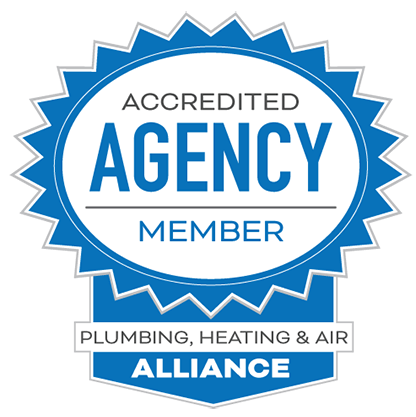2019 promises to be a big year for plumbers. Check out our SEO for Plumber’s guide if you have not done so already. Today, we will discuss an actionable checklist that every plumbing contractor can utilize to gauge the progress of their web presence and identify points on which improvement is necessary.
As a digital marketing agency working with plumbers for almost a decade, we have the resources at our disposal to put companies in a position to succeed in the online space. The goal for all plumbers is to make more money. The best way to do that is through online lead generation, the majority of which happens via digital marketing campaigns. In this 10 point checklist, we’ll touch on the most critical aspects of SEO:
1) Design
The front end of a website is what most consumers think about once they enter. It’s what most contractors think about when evaluating their plumbing websites. But the reality is that the front end is predicated entirely on a structurally sound back end. What good is a visually appealing website that nobody visits? What is its value to plumbers? The truth is that visuals only matter if you get the visitor to enter in the first place. That’s not possible without excellent website design.
So what makes web design suitable? For starters, a professional designer should create the framework. They should implement a clean and SEO-friendly code base, as well as SERP enhancers like schema markup. Does that all sound a little bit foreign to you? It should be because programming is not something that the general public understands. The need for professional web design is pressing, and it’s even more beneficial when the designer has a background in search engine optimization.
A solid codebase can place sites in an initial position to generate traffic. But the visual appeal, user experience, and navigability are what will keep them there. Google measures website performance in large part by how the user behaves after finding the site. If they exit immediately, the site’s bounce rate goes up. The higher the bounce rate, the worse your website is performing. One additional factor regarding design is how easy the website makes it for users to locate pertinent information. That means where to find you, how to contact you, how to review you, etc. These blocks of information should all be displayed prominently on a website. Plumbers should ensure their website excels in these areas:
- Display
- Navigation
- User Experience
- Visual Appeal
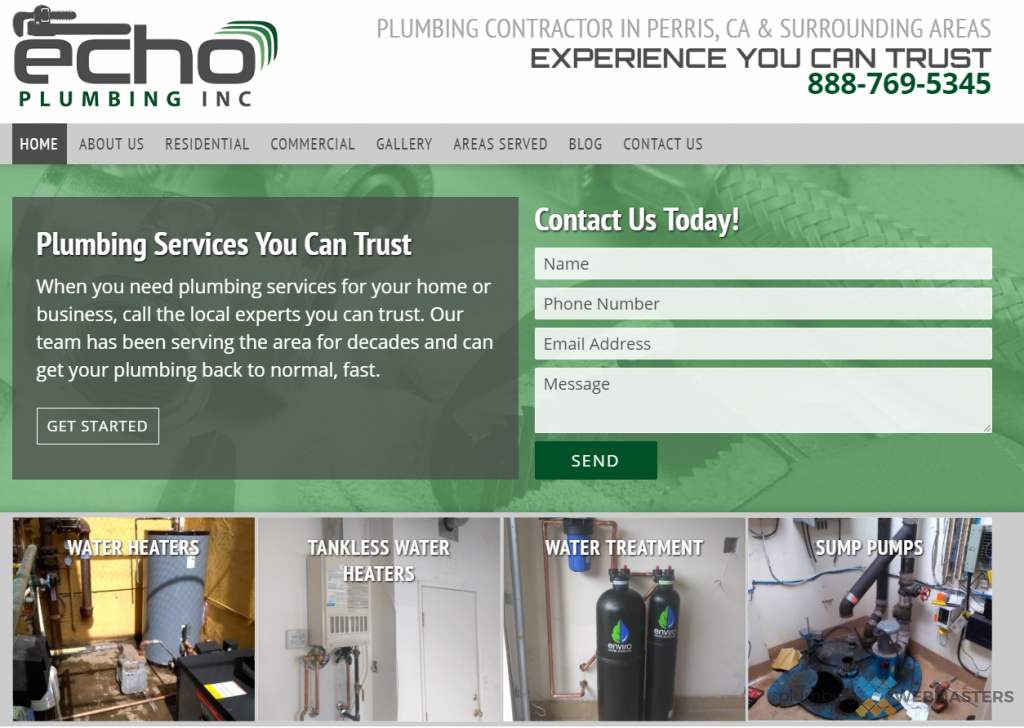
2) Code Base
Many points on the SEO checklist will tie directly back to design, which is why it is #1 on the list. The codebase is a prime example of an extension of design but requires its undivided attention. The back end of a website is made possible by coding. Whether it’s HTML, CSS, JavaScript, or any other kind of programming language, it matters for your website. What makes code so critical to website success is the language through which Google interprets the virtual object. What’s your company’s name, where is it located, what are the services, etc.
The front end of a website can promote these pieces of information through content, while the back end must use a microdata language known as schema.org. Most people reading this post use a template website for their plumbing services. Unfortunately, while it may have schema code, it isn’t likely to be optimal. Worse templates guarantee duplication of a codebase with other sites on the internet, sometimes even your competitors. But those listed above you for primary keywords more than likely have a custom code base rather than a premade template.
You can mark up almost every single component of your website with schema. Schema helps Google parcel your site’s data and understand its content to promote it best. The microdata tags can also encourage SERP enhancements which add exciting features to your search results, such as aggregate star ratings and site links. Much like ad extensions for PPC, SERP enhancements can make an organic impact outrank one that’s competing with it. A proper code base should exhibit these qualities:
- Clean
- Communicative
- Custom
- Structured (Schema Markup)

3) Content
There’s probably no word used more in the world of digital marketing than content. People swear by its value, and as Google’s algorithm has evolved, so has the standard for creating SEO-friendly content. Yet, to this day, many websites still exhibit shallow content. Content stuffed with keywords over and over again reads unnaturally and looks as if a 3rd grader wrote it with a poor grasp of sentence structure. The content that should be on your plumbing website is natural. Write your pages as you would want them described to your target customer. Consider identifying LSI keywords, natural synonyms, and terms related to your primary word, and place them within your content.
The presence of LSI keywords helps Google interpret a web page as robust and uses natural language that relates itself to the subject matter at large. The process of SEO writing has had difficulties shaking the tradition of keyword stuffing because old habits die hard. While using the keyword within the title tag and header tag is still encouraged, it should not be used more than once or twice within the body paragraphs themselves. A good rule of thumb is not to publish any content that doesn’t reflect how you would describe a service to customers in person. The written content is different from its spoken counterpart, but its entire presentation should mirror your direct intentions. Content on plumbing websites should favorably exhibit the following qualities:
- Grammar
- LSI Keywords
- Readability
- Sentence Structure
4) Google My Business & Maps
Google My Business is the easiest thing to get right for plumbers who are marketing their services online, and it happens to coincide directly with your company’s Google Maps listing. But there’s a caveat; it’s also one of the easiest things to screw up. Messed-up listings are usually a result of plumbers trying to do too much with their GMB account. It’s a fundamental concept. GMB tells Google the name, address, and category of your business so that they can adequately promote you to consumers in your local area on Google Maps. So that’s the very base level of Google My Business, but there are also additional steps that can make a GMB listing even more impactful.
One of those is the FAQ section, where the business owner answers frequently asked questions from consumers. Plumbers can also put in branded company photos, like pictures of your office, truck, etc. Don’t forget your company logo. Most plumbers understand that local SEO is essential, and Google Maps is the foundation of every local SEO strategy. Optimizing your Google My Business page encourages Maps placement. Here’s what you should attend to regarding your Google My Business:
- Branded Profile
- Company Pictures
- NAP Accuracy
- FAQ Section
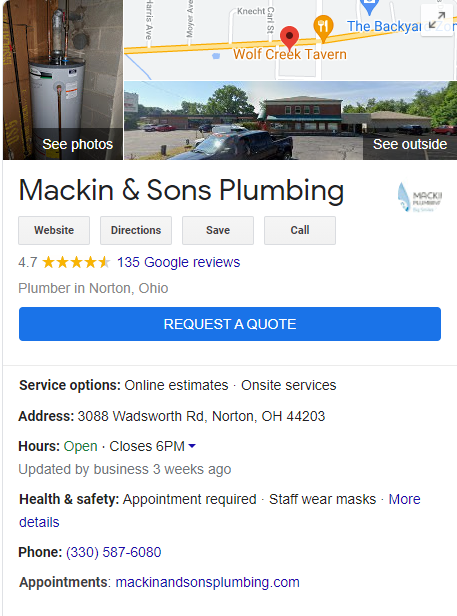
5) Reviews
As we noted earlier, points on this checklist tend to relate to one another. Google My Business is one of the best sources of customer reviews, which brings us to the following checklist point for plumbers, which is online reviews. While Google should be a top source for reviews, it should not be the only source. For example, if you get ten reviews, about 5 of them should be on Google. The others can disperse to Facebook, Yelp, BBB, and several other worthy platforms. Google has even publicly discouraged the notion that all reviews should affiliate with Google My Business.
But to diversify reviews, you have to generate them and do it ethically. It would help if you actively pursued reviews by asking satisfied customers in person and integrating a reviews dashboard that automatically texts clients your review profiles on Google and Facebook. In addition, it would make it convenient for anyone on your website to click the review us button. Be careful about who you do ask for feedback, however.
If you had significant problems with one of your clients, and you know that they were challenging to work with, don’t promote your Google or Facebook account to them. Hopefully, clients like these are few and far between but don’t go looking for bad reviews. Although they will be inevitable at times, you can drown plenty of good ones, as well as your direct response to the bad ones with professional reactions. Make sure you monitor these aspects of your reviews:
- Diversity (Google, Facebook, Yelp, etc.)
- Quality
- Quantity
- Website Integration
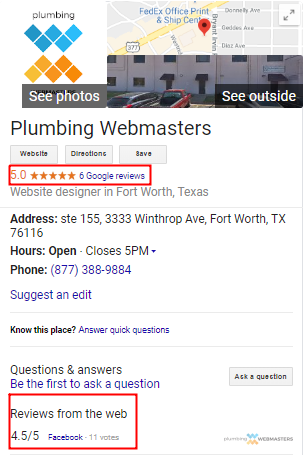
6) Link Building
A website builds authority by the number of inbound links that point to it. MOZ measures their collective influence with a metric called domain authority. While DA is not a Google metric, it provides a general snapshot of the strength of inbound links pointing to a particular website. Domain authority (DA) measures on a 1-100 scale, with 100 being the most authoritative link profile imaginable and 1 being a link profile that ceases to exist. The whole concept of link building is dangerous for SEO. Not all links hold equal value, and many times, links can distract plumbers and other website owners from more manageable SEO tasks.
In 2012, Google’s Penguin update ended manipulative link building and heavily penalized sites that broke guidelines. Fast forward to 2019, and while penalties are no longer as typical, the value of low-quality links is pretty much zero, if not hostile. So how do you build links? The only avenues are creating great content, building citations, sharing on social media, and conducting PR and blogger outreach. The most valuable links come organically. If you write a great blog post about plumbing, share it on social media, and another blog links to the article, you’ve earned a precious organic link. This process is hard to execute; make no mistake. But consistency and attention to detail help make it more probable. Keep an eye on these link-building metrics.
- Domain Authority: MOZ’s estimate of a website’s authority
- Followed Linking Root Domains: The number of unique domains pointing to a site (with dofollow links)
- Inbound Links: The number of total inbound links pointing to a website
- Linking Root Domains: The number of total domains pointing to a site (both dofollow & nofollow links)
7) Social Media
Social media and SEO are related, whether you want to believe it or not. Many plumbers don’t want to hear that because they hate social media. And we don’t blame them. After all, how does an anti-social plumber utilize social media in 2019? Truthfully, you don’t have to be a digital celebrity to make an impact on Facebook, Twitter, Instagram, Linkedin, or YouTube. All you need is a legitimate presence on each platform. Unfortunately, Google has not been forthcoming about the direct influence of social media activity on search rankings. Still, evidence suggests that social signals take into account in one way or another.
That’s why publishing blogs on Facebook, Twitter, and LinkedIn produce visual content for Instagram and YouTube. When people are engaging with your business, whether it likes, shares, views, comments, or otherwise, it signals to Google that your company is relevant and noteworthy. Again, you don’t have to be a typical social media personality to send out these signals. After all, you’re looking for engagement from plumbing customers. People who are your clients, or who will one day become them. One thing to consider with Facebook and Instagram is that you won’t get many organic impressions. If you want to be seen organically on these platforms, you’re going to have to pay to advertise on them. But branded searches still matter. So when consumers who have pre-existing knowledge of your company look for you on IG or Facebook and don’t find you, that’s a missed signal opportunity that could go to Google. Keep these things in mind when auditing your social media presence:
- Branding
- Signals
- Syndication
- Visibility
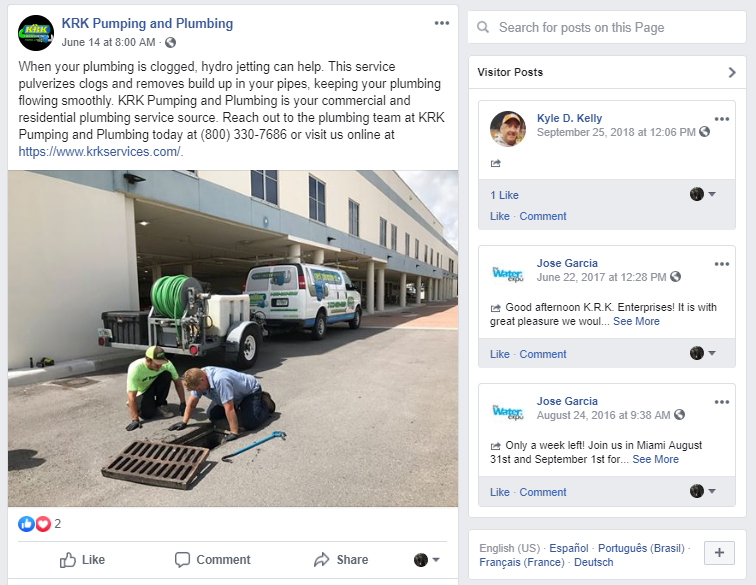
8) Ongoing Work
Is your plumbing website stagnant? Also, do you add new blog posts each month? Finally, Have you invested in a website redesign? In any case, you are jeopardizing your position on Google SERPs or preventing yourself from improving. SEO is not a one-time deal. To truly master SEO, plumbers must commit to consistent optimization tasks. Google constantly changes its algorithms as they evolve, and activity will also be necessary. That’s no different than any other form of marketing, whether it’s online or not. If you don’t make incremental improvements each month, year, and decade, you can’t expect to thrive in your marketplace.
An example of Google’s evolution relates to content advancements. Google used to reward content written a certain way and ranked pages with keyword stuffing. Today, those same techniques will hurt your rankings. So if you never updated your content, you lost major spots on Google’s SERPs. Ongoing work is imperative to sustain a certain level of ranking and improve upon it. And it goes beyond content. Other areas that require continuous attention are coding, design, and user experience. Plumbers will want to take special notice of the following areas when checking for ongoing work:
- Coding: Is HTML, CSS, JavaScript, & Schema up to date and reflective of best practices?
- Content: Is content up to date, and is it written for a 2019 reader?
- Design: Is design fresh, engaging, and amenable to a 2019 visitor?
- User Experience: Is a 2019 user going to have a positive experience with your site?
9) Paid Advertising
Plumbers tend to favor paid advertising, especially PPC from Google Ads, because it works quickly. PPC can be a significant part of an internet marketing strategy, as long as it coincides with macro-scale efforts like SEO, web design, etc. The problem with PPC is that it’s inherently short-lived. You can’t expect to make a living off of PPC ads. There are pockets of time when you can create significant ROI, but it cannot be your only source of traffic or lead generation if you expect to sustain success.
Furthermore, PPC only works with properly managed campaigns. Budgeting, targeting, and landing page optimization are crucial elements to Google Ads, and ignorance of them will result in a failed venture. Google is not the only paid advertising platform available to plumbers. Contractors can also invest in paid social media advertising like boosted Facebook posts or even Instagram posts. As we noted earlier, Facebook doesn’t show posts organically, so paying for promoted posts is one of the best ways to activate the social signals that influence SEO. Again, paid ads can be beneficial but only maximize when they are part of a more effective digital marketing strategy and one founded in SEO and website design. Ensure your paid advertising campaigns have these things managed:
- Analysis
- Budget
- ROI
- Targeting
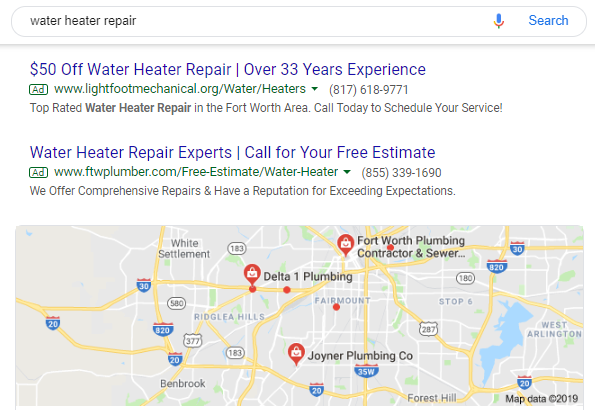
10) Brand Authority
New forms of media have inserted themselves into the SEO discussion. Whether it’s video content, which has been around for some time but has recently started to become easier than ever to produce, or podcasts, which are an undervalued media format for any business, their collective influence over brand authority can be significant. The more signals a brand can send Google that is relevant and noteworthy, the more authority it can establish online. Podcasts and videos are great because they can be distributed and syndicated on multiple platforms. With podcasts, those can be Apple, Spotify, Stitcher, and embedment on your website. With video, it can be YouTube, Instagram, Facebook, and also embedment on your website.
Multimedia provides seemingly limitless options for plumbers, but convincing them to participate in producing this content can be challenging. If you are a plumber looking to take your business to the next level in 2019, you should more than consider a multimedia campaign; you should invest the resources required to do it. Brand authority is measured in more traditional ways as well. In other words, website design, logo design, and content marketing are also indicators of brand authority. But for this checklist, focus on these newer concepts:
- Audio Podcasts
- Branded Media
- Multimedia Distribution
- Video Content
11) Google Homepage
The Google homepage is an industry term for a phenomenon that exists with branded searches. When a consumer with pre-existing knowledge of your plumbing company types its name into Google, the entire SERP shows up for branded features, including the Knowledge Graph. The Knowledge Graph appears on the top of SERPs and shows your GMB profile and NAP information. It should also include a page full of organic results associated with your company, which might consist of everything from your website, social media profiles, and other business directories across the web. The bottom line is this; you want your branded SERP to look great. It will only look great if you’ve attended to each primary point of this checklist. So what are the components of an optimal Google homepage?
- Branded: The Knowledge Graph should show your GMB profile, and all results should be associated with your company
- Feature-Rich: Several SERP features should be present, including aggregate star ratings
- Healthy: There should be plenty of results, and all first page ones should be relevant
- Robust: There should be diversity in the pages that show up, like website, social, & profile
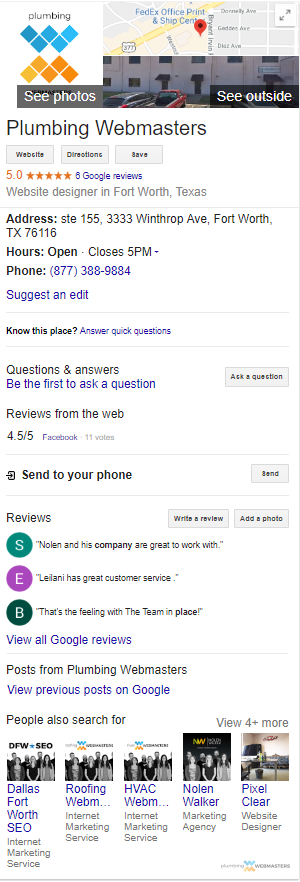
Podcast: Play in new window | Download
Subscribe: RSS



